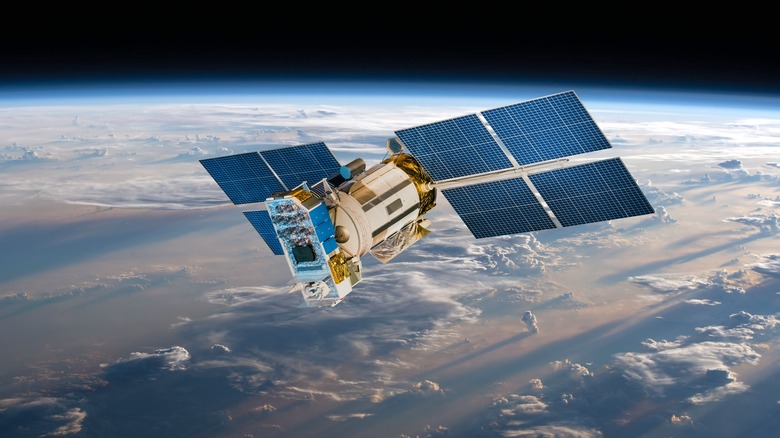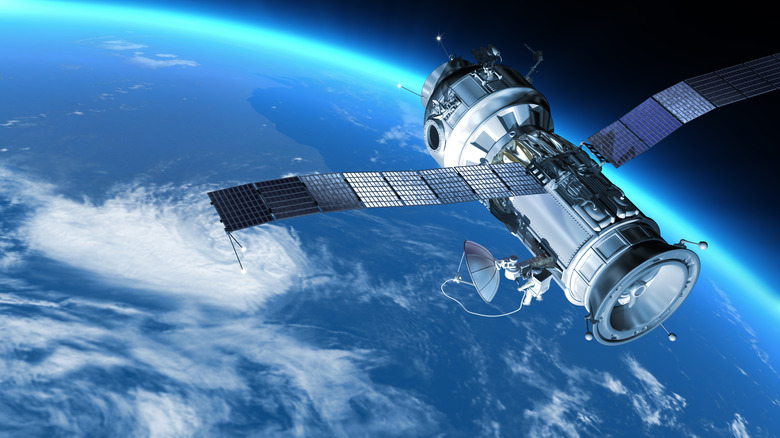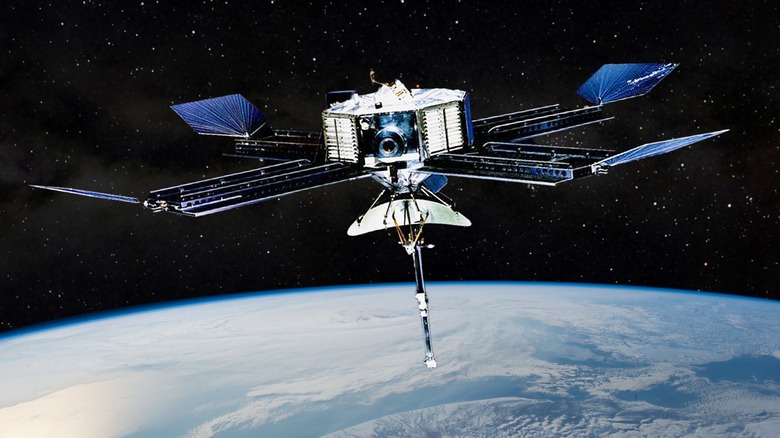How Powerful Are Spy Satellite Cameras, And What Can They See?
Cameras have evolved significantly since the early concepts of camera obscura and daguerreotypes. The first widely available spy camera was created by Robert D. Gray in 1885 and was very James Bond-like in that it took pictures through the buttonhole of a shirt. The Cold War would see spy cameras evolve further, becoming more self-contained and miniaturized while being easier to conceal. Contemporary society has witnessed the domestication of spy cameras in the form of home surveillance which allows real-time coverage of a home or building using wifi and satellite technology. Whether it's our smartphones, CCTV that watches us in stores and on the streets, or the eye in the sky with satellites, cameras capture our lives with greater detail and clarity than ever before.
This very need to see what is going on from far away is what helped drive the development and launch of spy satellites during the Cold War. Spy satellites, such as those in the Cold War-era CORONA program, went into orbit around the Earth, filling the need for eyes in the sky by taking reconnaissance photos of huge swaths of territory. The cameras that take these pictures from miles above have always been on the cutting edge of technology, but today's spy satellite cameras are on a whole new level.
Early camera technology
The early spy satellite cameras were cutting edge for the era, in both their makeup and the resolution of the pictures they took. Going back to those spy satellites in the CORONA program, each camera system aboard was between five feet and nine feet in length with a resolution of roughly 40 feet from an orbit of 100 miles up. The resolution of their images would improve over time as would their coverage of the Earth. By the end of the program on May 31, 1972, the CORONA program had photographed 750 million square miles of the Earth's surface!
Satellite cameras that could provide panoramic pictures and make it easier to spot Soviet missile silos, made their way to space in the early 1970s. The HEXAGON KH-9, satellites for instance utilized optical bar cameras to do just that while taking pictures of objects two feet across or smaller. Its tour of duty would end in 1986 having taken 877 million square miles of pictures.
Today and beyond
More recently, spy satellite cameras have dramatically increased in capability, with most of the specifics kept under wraps. Even the lead agency for the U.S. spy satellite program, the National Reconnaissance Office (NRO), wasn't acknowledged as an entity until 1992. But what we do know is that the NRO and its contractors such as Albedo have developed spy satellite cameras equipped with electro-optical imaging. These camera systems have resolutions of 10 cm with the capability, according to Winston Tri, Co-Founder and CPO at Albedo, to "count trucks, convertibles, and see details on the vehicles such as sunroofs, racing stripes, and if trucks have anything in their bed."
The capabilities of spy satellite cameras will only continue to grow, especially with the proliferation of AI. AI allows for the collection, analysis, and processing of intelligence on a massive scale beyond the scope of previous spy satellites. What once took miles of film that had to be dropped to the Earth in canisters, recovered, and then studied by analysts as with the CORONA program, now gets delivered in days if not minutes. Developments in AI, programs like Sentient, and more advanced camera systems will capture more detail than what has ever been possible, whether we want it to or not.


